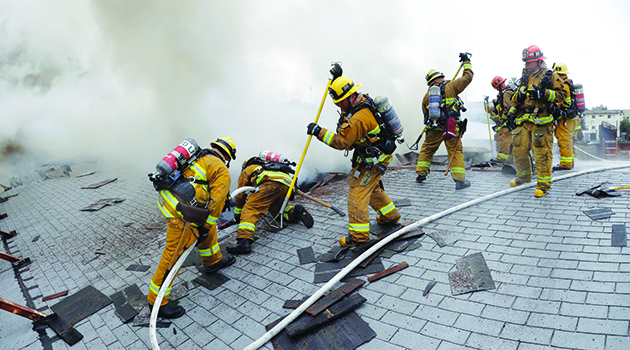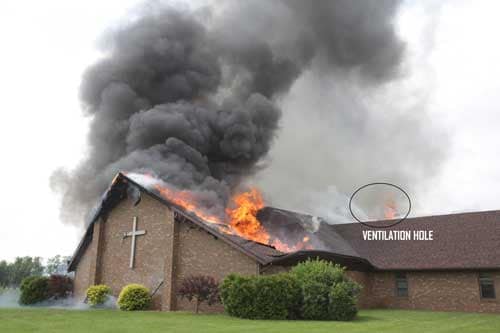An unvented roof is often the only viable option when roof framing is complicated such as when there are hips valleys dormers or skylights that would prevent eave to ridge ventilation.
Fire engineering roof ventilation.
Fireground safety procedures are constantly addressed along with proper tool use and roof movement.
Proper ventilation operations on flat roof structures can prevent flashover prevent the spread of fire in cocklofts and attics and make it easier and safer for members to conduct search.
Ridge ventilators slope ventilators or louvred ventilators.
Ventilation allows the chemicals smoke and heat evacuate out.
Pitched roof ventilation can be one of the most hazards operations on the fireground yet it is one of the most important assignments.
However there are many other critical steps that we need to master in order to make roof ventilation an efficient process.
Residential fire rescue fire engineering books.
Peaked roof ventilation lieutenant bob pressler discusses roof styles often encountered by fire personnel equipment needs roof access and types of cuts required for successful ventilation.
When the house has no soffits and hence no soffit vents.
One of the truck company functionsfirefighters must contend with on the fireground is vertical ventilation and in some cases this entails dealing with flat roofs.
Any building with a floor area of over 500 m2 must be provided with smoke ventilation this can be done with open able windows panels or other openings roof ventilators i e.
A flat roofwill comprise of.
When we talk about roof ventilation we often focus on the cut itself.
The two types of cuts that firefighters can use can be made with either a rotary saw or a ventilation saw depending upon the roofing material.
Unvented roofs also.


























